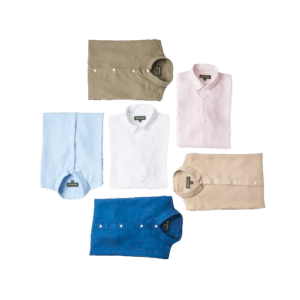Linen Fabric: A Sustainable Fashion Choice

Linen, a natural textile woven from the fibers of the flax plant (Linum usitatissimum), has a rich history dating back thousands of years. It is celebrated for its remarkable sustainability, unique qualities, and versatility, making it an excellent choice for eco-conscious fashion enthusiasts. This comprehensive guide delves into the world of linen fabric, its origins, its characteristics, and why it stands out as a sustainable fashion staple.
Origins and Cultivation: Linen’s journey begins with the cultivation of flax plants, a process with minimal environmental impact. Flax grows abundantly in various climates, requiring far less water and pesticides than fibre crops. Moreover, flax’s deep roots enrich the soil and contribute to biodiversity, making it a planet-friendly choice.
Production Process:
The production of linen fabric involves several eco-friendly steps:
- Harvesting: Flax is harvested by hand or mechanically, with minimal environmental impact.
- Retting: The flax stems undergo a natural process called retting, which is soaked in water or left in the fields to decompose. This method avoids the need for harsh chemicals and encourages biodegradability.
- Spinning: Flax fibres are separated from the plant and spun into yarn, which consumes less energy than synthetic fibres.
- Weaving: Linen is woven using energy-efficient methods, producing a lightweight yet sturdy fabric.
Characteristics of Linen:
Linen fabric is renowned for its unique set of characteristics:
- Breathability: Linen is exceptionally breathable, perfect for hot and humid climates. It wicks moisture away from the body, ensuring comfort throughout the day.
- Durability: Linen is one of the strongest natural fibres, known for its longevity. With proper care, linen garments can last for years.
- Texture: Linen’s natural texture adds a distinctive, rustic charm to clothing, creating a timeless and versatile fashion statement.
- Sustainability: Linen’s eco-credentials extend beyond cultivation. Its durability means fewer replacements, reducing waste and environmental impact.
Advantages of Linen in Sustainable Fashion:
- Low Environmental Impact: Linen’s cultivation and production processes have a minimal ecological footprint, making it a sustainable choice.
- Biodegradable: At the end of its life cycle, linen fabric naturally decomposes, leaving no trace of synthetic microfibers in the environment.
- Versatility: Linen adapts well to various styles and can be worn in casual and formal settings, promoting a minimalistic and timeless wardrobe.
- Circular Economy: Linen’s resilience lends itself to recycling, upcycling, or repurposing, aligning with the principles of the circular fashion economy.
Caring for Linen:
To ensure your linen garments last, follow these care tips:
- Gentle Washing: Use mild detergent and cold water to preserve colour and fibres.
- Air Drying: Line or flat drying prevents wrinkles and maintains the fabric’s integrity.
- Ironing: Iron your slightly damp linen clothing, or embrace its natural wrinkles for a relaxed look.
- Linen fabric embodies sustainable fashion at its core. Its environmentally friendly cultivation, production, and durable qualities make it a responsible choice for conscious consumers. By choosing linen, you enjoy its unique comfort and style and contribute to a more sustainable and eco-conscious fashion industry. Embrace the timeless elegance of linen and positively impact the planet and your wardrobe.
